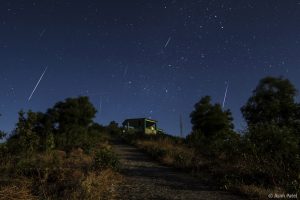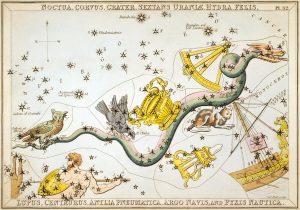
Get ready to watch one of the largest displays of meteor showers of the year. Between December 7th and 15th, the Geminid meteor shower will be in full view. The Geminids are meteor showers produced by the 3200 Phaethon meteor, and were given its name because of its position in relation to the stars Castor and Pollux in the constellation Gemini. Compared to other high-profile meteor showers, the Geminids were a late discovery; ca. 1860’s. According to the Oxford Reference Astronomy Dictionary, the Gemind meteor shower has a Zenithal Hourly Rate (ZHR) of 100. (For students of astronomy, if you want to find out how many meteors can be seen within a particular shower, use the ZHR formula.)
The peak of this year’s shower is Thursday-Friday, December 13-14th. Weather permitting, you should be able to see these constellations:
- Auriga
- Gemini
- Cancer
- Lynx
- Ursa Major
- Ursa Minor
- Canis Minor
- Hyrda (largest of the 88 modern constellations described by Ptolemy)
- Leo

The general consensus among astronomers is that the meteors are at maximum during the morning of December 14th. For best viewing, you’ll need a dark, open sky (no clouds). If you live in a highly populated area where city lights brighten the sky and obstruct the view, consider venturing out into a rural area. You may want to pack a sleeping bag and hot chocolate to keep you warm. This article in “EarthSky” suggests the best time to view the showers is around 2:00 a.m.
If you’re not in Baltimore, visit these sites for the best times to view the Geminids in your area.
____________________
References
“All you need to know: Geminid meteor shower in 2018,” Bruce McClure and Deborah Byrd. Astronomy Essentials/Space, EarthSky, December 9, 2018.
Check out recent articles on the Geminid meteor shower via Google Scholar.
“Could the Geminid meteoroid stream be the result of long-term thermal fracture?”
“Increasing Geminid meteor shower activity,”
“Activity of the 2013 Geminid meteoroid stream at the Moon,”
_________________
COMING UP NEXT! The “Christmas Comet” 46P Wirtanen will be passing our way next week!
